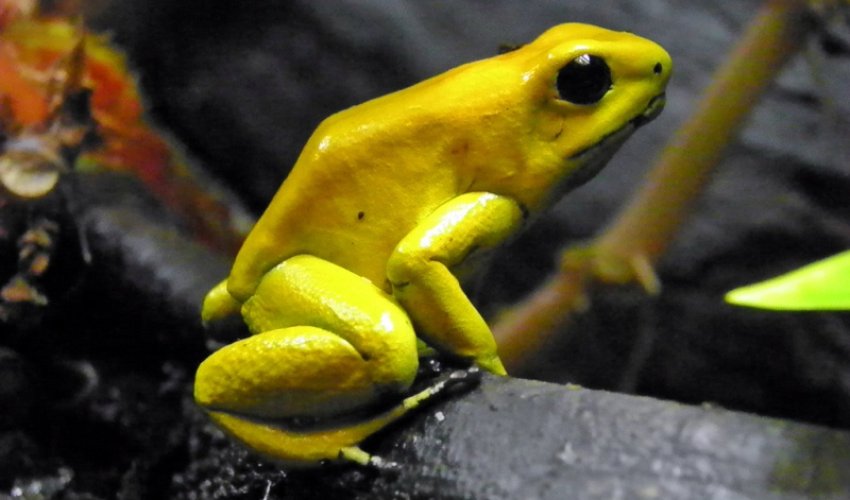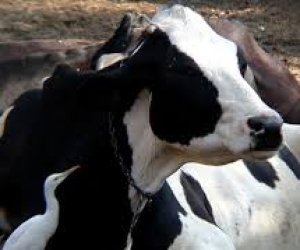World's most deadliest animals - PHOTO

Some animals continuously steal the top spots on various lists of the world’s dangerous and deadliest animals. While great white sharks, cobras, and ferocious African felines may be experienced predators, there are just as many little-known yet equally threatening animals lurking in the wild:Asian Giant HornetOnce you notice the size of the Asian giant hornet—nearly as big as one’s thumb—you’ll know why it needed to be included on this list. The hornet’s wingspan is bigger than that of some hummingbirds, and can fly at an impressive 25 miles per hour–even faster when in a hive. This huge hornet, also referred to as the Japanese giant hornet, is responsible for numerous deaths in Japan every year.To fully grasp the size of the Asian Giant Hornet, check out this video of a man’s “pet” hornet:One sting from the Asian giant hornet can be fatal, regardless of the victim’s experience of an allergic reaction to the venom. Significantly more potent than other wasps and hornets, the Asian giant hornet’s venom contains cytolytic peptides that literally tear apart cell tissue on the molecular scale. The size of the stinger, ¼ of an inch, combined with the venom, mean that this hornet sting is devastatingly painful.Tsetse FlyLocated primarily in Africa, tsetse flies are bloodsucking flies made deadly due to their incredible capacity to transmit disease. When making contact with people, the tsetse flies primarily transmit the sleeping disease; for animals, it’s animal trypanosomiasis, also known as nagana.The sleeping sickness causes a slew of neurological problems, as well as long term issues in the kidneys, cardiovascular system and more. Large tsetse populations even prevent humans from settling in some geographic areas.Though they look similar to other fly species, tsetse flies differentiate themselves by surviving solely upon the blood of other mammals. Tsetse flies have a life span of one to three months, and suck blood daily–usually during peak warm hours–to stay alive. Fossils of the fly have been found in the Florissant Fossil Beds in Colorado, leading researchers to believe that in addition to being quite dangerous, they are also extremely old.Golden Poison Dart FrogDart frogs are well known thanks to their technicolor topcoat, though the origin of their name is just as vibrant: many tribes used the frog’s venom on the tips of their weapons to assail intruders.There are nearly 100 species of dart frogs, each of which varies in coloration, size, and toxicity. These species are all aposematic organisms, meaning that their coloring is an anti-predator adaption to scare away potential foes. The most toxic of all dart frog species, though, is the golden poison dart frog.Striking in its bright, neon appearance, a single golden poison dart frog has enough venom to kill 10 adult humans. It is currently endangered, and as a social animal, is often found in groups of four to six. Scientists are still unsure as to how these frogs become toxic. Though the skin of a wild golden poison frog is densely coated in alkaloid poisons, those raised in captivity never develop venom.Cone SnailUpon glancing at a cone snail, one might only notice the intricate, henna-esque designs covering its shell. Pick one up, however, and that person could be in for a nasty surprise.The cone snail, scientific name conus geographus, grows to approximately 4-6 inches, and is indigenous to the Indo-Pacific reefs.Though they appear to be little more than an ordinary snail, the cone snail has the most poisonous venom of more than 500 cone species. The snail injects venom into its victim through a harpoon-like tooth, paralyzing its prey. Rather serpentinely, the cone snail then swallows its victim whole, regurgitating any leftover bits after digestion.The cone snail’s venom is one of the most potent neurotoxins in existence, and can prove fatal to humans. Luckily, few deaths are reported each year, as the more deadly cone snails often live on the ocean floor away from humans. The snail isn’t all bad, though; these days, researchers are using cone snail venom and its components to create painkillers and other pharmaceutical drugs.Cape BuffaloUnlike its domesticated relative the water buffalo, the Cape buffalo is highly unpredictable and incredibly dangerous. Short, thick and with massive horns that fully mature when the buffalo reaches the age of 7, these ovine animals are a major force to be reckoned with.Cape Buffaloes rival hippos as being the most deadly animal in Africa, seeing as they cause a high number of deaths each year. Because of their ferocity, hunters who can bring down the Cape buffalo are highly respected within their communities. In Africa, Cape Buffaloes are considered part of the “Big 5,” a definitive list of the most dangerous African animals. The other four animals that comprise the list are the lion, African elephant, leopard, and rhinoceros.Unlike many grassland animals, Cape Buffalos are antagonistic and occasionally face their predators head-on, looking for an opportunity to strike back. Herds have been known to attack and kill large predators–even lions.Brazilian Wandering SpiderWhen people mention scary spiders, black widow and brown recluses often top the list. Yet the Brazilian wandering spider is undeniably the most terrifying of all. Territorial, incredibly aggressive, and highly venomous, these spiders are arguably the most dangerous species in the world.Though smaller than most spider species, Brazilian wandering spiders, also known as banana spiders, are not fearful of humans. During the day they hide in plants, old boxes, and other unsuspecting locations, but at night, they become highly active and seek out their prey.The Brazilian wandering spider is believed to have the most potent neurotoxic venom of any spider in existence. A tiny 0.006mg dose can easily kill a mouse. Thankfully, these spiders only inject a full dosage of venom into their prey about 40% of the time they bite. The rest of their bites are venom-less, yet still pack a great deal of pain.Some trivia: for male victims, the Brazilian wandering spider’s venom often causes a prolonged erection, leading some to call it a “natural Viagra.”Box JellyfishEveryone knows that a jellyfish sting is to be avoided at all costs. However, being stung by the wrong type of jellyfish could cost a person his or her life as it’s one of the deadliest animals on the planet:While only superficially distinguishable from other jellyfish by its cube-like shape, this well-developed species also has eyes and can propel itself through the water.The box jellyfish kills its prey by injecting poison into the unsuspecting marine life using its tentacles. These tentacles grow up to an astonishing 10 feet long and are covered in stinging cells that can recognize the presence of foreign chemicals. For humans, a sting could be fatal. Often, the toxins shut down the person’s nervous system within minutes, and many swimmers have been known to drown before even making it back to shore.Oddly enough, sea turtles have immunity from the box jellyfish, and frequently use this immunity to prey upon them. For humans who are lucky enough to survive a box jellyfish sting, scars like the ones below will always be a reminder of their run in with such a dangerous animal.(all-that-is-interesting.com)ANN.Az




































 Photo
Photo 



 Video
Video 

